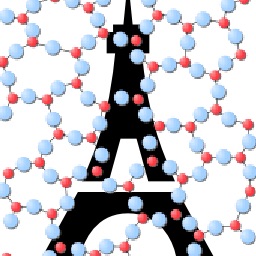Isothermal Stimulation of Mineral Dissolution Processes by Acoustic Perturbation
Based on systematic experimental interrogation of the aqueous dissolution behavior of a large selection of minerals – whose dissolution rates vary by several orders of magnitude – this study demonstrates that acoustic perturbation yields an unprecedented enhancement in dissolution kinetics, which scales with the mineral’s hardness and average bond energy. The dissolution enhancement produced is described by an Arrhenius-like formulation that reveals the energy imparted to the solute’s surficial atoms by sonication. From an energy landscape perspective, it is highlighted that sonication perturbs surficial solute atoms from their equilibrium positions. As a result, upon contact with a solvent, sonicated atoms need a smaller amount of energy for dissolution to occur by bond rupture. Therefore, the activation energy of dissolution under sonication is consistently smaller than that under sonication-free conditions. Altogether, this study suggests that the enhancement in mineral dissolution over the course of acoustic perturbation under macroscopically isothermal conditions results from the excitation of the surficial atoms – and is negligibly associated with temperature rise or surface area amplification as has been previously suggested.
